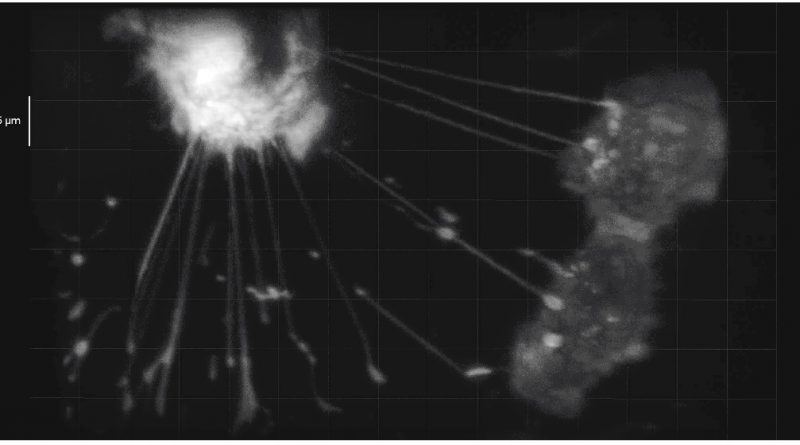CELLS TALK AND HELP ONE ANOTHER VIA TINY TUBE NETWORKS
When the physician and scientist Emil Lou was an oncology fellow at Memorial Sloan Kettering Cancer Center about a decade ago, he was regularly troubled by the sight of something small but unidentifiable in his cancer-cell cultures. Looking through the microscope, he said, he “kept finding these long, thin translucent lines,” about 50 nanometers wide and 150 to 200 microns long, extending between cells in the culture. He called on the world-class cell biologists in his building to explain these observations, but nobody was sure what they were looking at. Finally, after delving into the literature, Lou realized that the lines matched what Hans-Hermann Gerdes’ group at the University of Heidelberg had described as “nanotubular highways” or “tunneling nanotubes” (TNTs) in a 2004 paper in Science.
Lou worried that the lines he’d noticed might be illusory, so he checked the archive of tumor specimens from patients at the cancer center. Lo and behold, the same long cellular processes were present in the tumors, too, so he set out to investigate their relevance. Since then, as a faculty member at the University of Minnesota, he’s found evidence that tumor cells use these TNTs to share molecular messages in the form of short regulatory snippets of RNA called microRNA, enabling cancer cells resistant to chemotherapy drugs to confer the same resistance on their neighbors.
CELLS TALK AND HELP ONE ANOTHER VIA TINY TUBE NETWORKS

